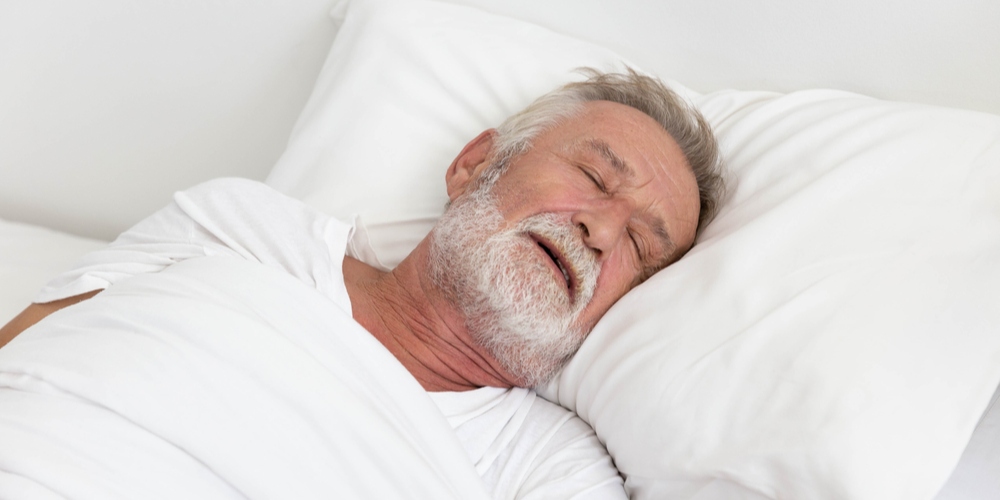What if your body was working against you every night, and you didn’t even realize it?
Imagine the sleep you’re counting on for rest is putting a strain on your brain, heart, and other organs. This is how sleep apnea affects daily life. A condition that silently disrupts your breathing and leaves lasting effects on your body. But what’s even more alarming? Its strong link to type 2 diabetes.
Sleep apnea is typically seen as a sleep disorder, and diabetes as a metabolic condition. Furthermore, research shows these two are more closely connected than many realize. From unstable blood sugar levels to increased insulin resistance, the consequences of poor sleep reach far beyond just fatigue. It can cause serious health problems, including type 2 diabetes. Additionally, as with many other complications, the hidden dangers of untreated sleep apnea extend deeper than most people expect. It not just affects sleep quality but overall metabolic health.
So, how does sleep apnea affect blood sugar regulation and insulin sensitivity?
In this blog, we’ll explore the connection between sleep apnea and type 2 diabetes. Furthermore, we will also discuss why they often occur together and what steps you can take to manage both for better long-term health.
Key Takeaways:
- Sleep apnea and type 2 diabetes are closely linked through shared risk factors and overlapping biological mechanisms.
- Disrupted sleep from sleep apnea increases insulin resistance, which makes it harder to regulate blood sugar levels effectively.
- Untreated sleep apnea may worsen diabetes management, while controlling both conditions can lead to better health outcomes.
- Early diagnosis and a personalized care plan are essential for breaking the cycle between poor sleep and high blood sugar.
Understanding Sleep Apnea and Type 2 Diabetes: A quick review
What is sleep apnea?
Well, sleep apnea is a condition that causes your breathing to pause and restart multiple times during sleep. As a result, these constant interruptions don’t just affect the quality of your rest. Moreover, they also disrupt the normal functioning of multiple body systems, putting your heart, brain, and metabolism under strain.
Sleep apnea has three types: obstructive sleep apnea, complex sleep apnea, and central sleep apnea. Among these, obstructive sleep apnea is the most common.
Here are some signs that may indicate sleep apnea.
- Loud, persistent snoring
- Gasping or choking during sleep
- Excessive daytime sleepiness or fatigue
- Morning headaches
Difficulty concentrating or memory issues
What is Type 2 Diabetes?
Type 2 diabetes is a chronic condition in which the body either doesn’t produce enough insulin or becomes resistant to it. Insulin is a hormone responsible for moving glucose (sugar) from the bloodstream into the body’s cells for energy.
When insulin function becomes impaired and it doesn’t work as it should, blood sugar levels rise. It leads to a condition called hyperglycemia. Over time, high blood sugar can damage the organs, nerves, and blood vessels. Ultimately, it increases the risk of heart disease, kidney problems, vision loss, and more.
Furthermore, type 2 diabetes usually develops in adults, but it’s increasingly common in younger people due to rising rates of obesity and inactivity. Additionally, it is often managed through diet, exercise, medication, and blood sugar monitoring.
Sleep Apnea and Type 2 Diabetes: What’s the Connection?
At first, these two conditions might seem unrelated, as they affect the body in different ways. While one disrupts your breathing during sleep, the other affects your blood sugar levels. Furthermore, disruptions in sleep patterns can negatively affect how your body regulates blood sugar, showing just how closely blood sugar and sleep are connected.
Furthermore, disrupted sleep caused by sleep apnea triggers a chain reaction in the body. Frequent pauses in breathing reduce oxygen levels and activate the body’s stress response. This leads to the release of hormones like cortisol and adrenaline, which interfere with insulin function. Over time, this hormonal imbalance makes the body more insulin-resistant, making it harder to regulate blood sugar effectively.
This brings us to an important question: “Can sleep apnea cause diabetes?”
The answer lies in the bidirectional relationship between the two. That means each condition can influence the development and progression of the other. Furthermore, sleep apnea doesn’t directly cause diabetes; it significantly increases the risk of developing diabetes.
Looking for a CPAP Alternative for Sleep Apnea?
Discover custom oral appliances designed to treat sleep apnea comfortably and effectively.
Why Sleep Apnea Is a Common Comorbidity in Type 2 Diabetes
Interestingly, sleep apnea and type 2 diabetes are often found together because they share several common risk factors. The most notable risk factors are obesity, older age, and a sedentary lifestyle. Additionally, people with excess weight, especially around the neck and belly, are at a higher risk.
In addition, repeated drops in oxygen levels during sleep can lead to increased insulin resistance. That is a key problem with type 2 diabetes. This creates a cycle where poor sleep worsens blood sugar control, and high blood sugar contributes to poor sleep quality.
That’s why sleep apnea is considered a common comorbidity of type 2 diabetes. Additionally, it doesn’t just occur by chance; it is closely linked through overlapping causes and biological effects.
Who is Most at Risk?
Some people have a higher chance of developing both sleep apnea and type 2 diabetes because of these risk factors:
- People who are overweight or obese
- Those with a sedentary lifestyle
- Individuals with a family history of diabetes or sleep apnea
- Older adults (especially over age 45)
So, if you’re in any of these groups and feel tired or snore often, talk to your doctor.
Symptoms That Shouldn’t Be Ignored
Often, when sleep apnea and type 2 diabetes occur together, symptoms may overlap. Look out for:
- Loud snoring or choking sounds during sleep
- Morning headaches
- Dry mouth upon waking
- Constant fatigue despite a full-night’s sleep
- High blood sugar readings in the morning
- Increased thirst or nighttime urination
However, if you ignore these signs, it may delay diagnosis and cause more health problems.
Diagnosing Both Conditions Together
If you are suffering from one condition, it’s wise to get screened for the other.
- Sleep apnea is diagnosed through a sleep study (polysomnography), which monitors your breathing, heart rate, and oxygen levels during sleep.
- Type 2 diabetes is diagnosed through fasting glucose tests, A1C tests, or an oral glucose tolerance test.
Doctors are becoming aware of the link between sleep apnea and diabetes, so don’t hesitate to bring up your concerns.
Managing Both Conditions Effectively
Managing one condition often helps improve the other.
Here’s how to handle both:
- Use a CPAP machine or oral appliances to treat sleep apnea and improve oxygen levels, which can also enhance insulin sensitivity.
- Lose weight through a healthy diet and regular physical activity.
- Monitor blood sugar levels consistently and follow your diabetes treatment plan.
- Avoid alcohol and sedatives that relax the throat muscles.
- Maintain a sleep schedule, reduce screen time, and create a restful sleep environment.
Managing both conditions can feel overwhelming. But with the right support, it’s completely possible.
When to See a Doctor
If you’ve been diagnosed with either diabetes or sleep apnea, or suspect you might have both, talk to your doctor. Early diagnosis can prevent serious complications like heart disease, nerve damage, and stroke.
Therefore, don’t wait for the symptoms to get worse. A proper checkup and treatment plan can help you sleep better and control sugar levels.
Conclusion
The connection between sleep apnea and type 2 diabetes is stronger than most people realize. These two conditions are bidirectional. They also share common risk factors, including obesity, family history, aging, and lifestyle changes. If left unmanaged, they can create a harmful cycle. In this cycle, poor sleep worsens insulin resistance, and uncontrolled blood sugar disrupts sleep even more.
Additionally, understanding the link is the first step. By recognizing the symptoms and getting a timely diagnosis, you can take control of both your sleep and blood sugar health. Whether you’re managing one condition or both, remember: small steps can lead to big improvements in your overall well-being.
Have Questions About Disturbed Sleep?
Don’t wait for the symptoms to get worse. Talk to your doctor, get tested, and take the steps toward better sleep and a healthier life.




